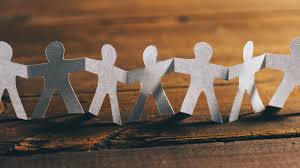Art has been a part of human life for thousands of years, shaping how we express ourselves, record history, and connect with each other. From ancient cave paintings to modern digital installations, art reflects culture, emotion, and creativity in many forms. Just like how different geek bar blow pop options appeal to different tastes, art offers diverse experiences for people with varying preferences. Whether you are a painter, a collector, or simply an admirer, understanding art can deepen your appreciation for it.
What Is Art?
Art is a broad term that covers a wide range of human activities involving creative expression. These can include:
-
Visual arts – painting, sculpture, photography, and digital media
-
Performing arts – dance, theater, and music
-
Literary arts – poetry, novels, and essays
-
Applied arts – design, fashion, and crafts
Art can be both functional and decorative, personal and public. While it may be challenging to define art in one single way, most forms share the intention of expressing an idea, emotion, or vision.
A Brief History of Art
The history of art is a journey through human civilization:
-
Prehistoric art: Early humans used cave paintings and carvings to depict animals, hunting scenes, and daily life.
-
Ancient art: Civilizations like Egypt, Greece, and Rome used art to honor gods, celebrate rulers, and tell stories.
-
Medieval art: Much of the art during this period was religious, featuring biblical themes and symbolic imagery.
-
Renaissance art: Artists like Leonardo da Vinci and Michelangelo explored realism, perspective, and human anatomy.
-
Modern and contemporary art: From Impressionism to abstract expressionism and digital art, the modern era has embraced experimentation.
Like how the geek bar omg blow pop flavor stands out among various geek bar flavors, each era of art history offers unique characteristics and approaches.
Why Art Matters Today
Even in today’s fast-paced, technology-driven world, art holds an important place. Its value extends beyond museums and galleries:
-
Cultural identity – Art preserves traditions, languages, and heritage.
-
Communication – It conveys messages when words are not enough.
-
Mental well-being – Creating or engaging with art can reduce stress and boost mood.
-
Education – Art teaches critical thinking, problem-solving, and empathy.
-
Economy – The art industry supports artists, curators, and related businesses.
Art is also becoming more accessible. Online exhibitions, virtual reality galleries, and social media platforms make it easier for artists to share their work with global audiences.
How to Engage With Art
You don’t have to be an artist to enjoy and appreciate art. Here are some ways to include it in your life:
-
Visit museums and galleries – Experience art in person to see details and textures often missed in photos.
-
Support local artists – Attend art fairs, craft markets, and community shows.
-
Create your own – Experiment with drawing, photography, or digital design.
-
Learn about art history – Understanding the context behind works can make them more meaningful.
-
Use technology – Explore virtual tours, online workshops, and art-based apps.
Engaging with art can be as simple as noticing the design of a building, the mural on a street wall, or the way light and shadow play in your environment.
Art is not just for experts—it is for anyone willing to observe, reflect, and connect with the world in a creative way. Whether your taste in art is classic, modern, or somewhere in between, there’s always something new to discover. Like exploring new geek bar flavors, trying different art forms can open up experiences you didn’t expect. Art gives life color, meaning, and connection, making it an essential part of the human journey.
